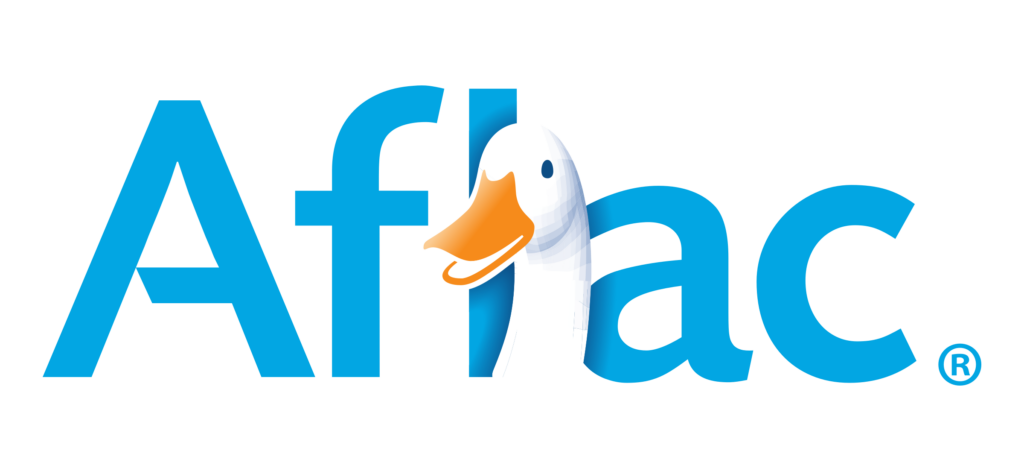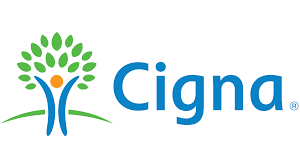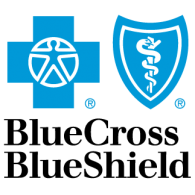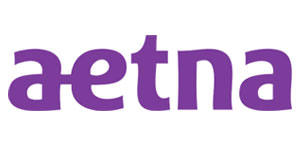Medicare Supplement Plan G: Benefits and Cost
Out of the ten standard Medigap plans, Plan G has become a popular choice thanks to its great coverage and straightforward benefits.
In this comprehensive guide, we will discuss everything you need to know about Medicare Supplement Plan G, including:
- Overview of Medigap Plan G (including pros and cons)
- Premium costs
- Plan G vs. Plan N
- Best Medigap Plan G providers
- How to enroll
We’ll also look at Plan G vs. Medicare Advantage and show why we strongly believe that Medigap Plan G is the better choice.
Let’s begin by exploring Medigap Plan G and understanding the coverage it provides.
What Is Medicare Supplement Plan G?
Medicare Supplement Plan G is a Medigap policy designed to work alongside Original Medicare (Part A and Part B).
Plan G helps cover out-of-pocket expenses that Medicare doesn’t pay for, such as copayments, coinsurance, and deductibles.
Plan G offers one of the most comprehensive sets of benefits available in Medigap plans, making it a preferred choice for those who want extensive coverage without unexpected medical bills.
What Does Medigap Plan G Cover?
Plan G covers:
- Hospital Costs (Part A Coinsurance and Hospital Costs): Plan G covers all coinsurance costs for hospital stays up to an additional 365 days after Medicare benefits are exhausted.
- Part A Deductible: Medicare beneficiaries are responsible for a deductible before Part A coverage begins. Plan G fully covers this expense.
- Part B Coinsurance and Copayments: After meeting the annual Part B deductible, Plan G covers 100% of the costs associated with doctor visits, outpatient services, and other Part B expenses.
- Skilled Nursing Facility Care Coinsurance: If you need skilled nursing care, Plan G covers the coinsurance costs.
- Excess Charges: Plan G pays for Part B excess charges, which occur when a doctor charges more than Medicare’s approved amount.
- Foreign Travel Emergency Coverage: Plan G includes up to 80% coverage for medical emergencies during foreign travel, up to plan limits.
What Is Not Covered Under Medigap Plan G?
Although Plan G offers the most comprehensive coverage for new Medicare enrollees, there are a few things that it does not cover, including:
- Part B Deductible: Plan G does not cover the annual Medicare Part B deductible, which is $257 for 2025 (subject to annual adjustments).
- Prescription Drugs: Like other Medigap plans, Plan G does not include Part D prescription drug coverage. Beneficiaries must enroll in a standalone Part D plan for medication coverage.
- Vision, Dental, and Hearing: These services are not covered under Plan G. Beneficiaries may need separate insurance or pay out of pocket for these expenses.
Medigap Plan G: Pros and Cons
Here’s a quick look at the pros and cons of Medigap Plan G to help you make a better decision:
| Pros: | Cons: |
|---|---|
| Covers nearly all out-of-pocket Medicare costs (except the Part B deductible) | Does not cover the Medicare Part B deductible (you must pay this annually out-of-pocket) |
| Predictable costs due to minimal out-of-pocket expenses | Monthly premiums can be higher than other Medigap plans |
| No network restrictions – you can see any doctor who accepts Medicare | Premiums may increase over time with age or inflation, depending on your state and insurer |
| Offers foreign travel emergency care coverage (up to plan limits) | Doesn’t include prescription drug coverage – requires a separate Part D plan |
| Widely available and easy to compare among insurers | Enrollment is best done during your Medigap Open Enrollment Period – otherwise, you might be denied or charged more |
What About Medigap Plan F?
Plan G is often compared to Plan F, which is widely considered the most comprehensive Medigap plan.
Here’s a breakdown of how these two plans differ:
Coverage: The key distinction lies in the Part B deductible – Plan F covers it, while Plan G does not. Beyond this, both plans provide identical benefits.
Availability: Plan F is no longer an option for Medicare beneficiaries who became eligible after January 1, 2020. In contrast, Plan G remains accessible to everyone.
Cost: Although Plan G requires you to pay the Part B deductible, it typically has lower monthly premiums than Plan F, making it a more cost-effective choice overall.
For many beneficiaries, Plan G offers nearly the same comprehensive coverage as Plan F but at a more affordable price point.
Speaking of pricing, let’s move on to review how much Medigap Plan G will actually cost.
How Much Does Medigap Plan G Cost?
The average monthly premium for Plan G typically falls between $140 and $250 per month.
Here’s a quick look at the premium ranges for Plan G and Plan F across different states to give you a better idea:
| State/Zip | Plan G | Plan F |
|---|---|---|
| Indiana/46226 | $145-$230 | $200-$385 |
| Missouri/65899 | $175-$350 | $240-$425 |
| Illinois/60096 | $170-$270 | $220-$385 |
| Texas/73301 | $140-$225 | $190-$330 |
| Florida/33024 | $300-$450 | $430-$585 |
Just a heads up, rates can vary depending on the state you’re in. These sample quotes are based on a 65-year-old female nonsmoker. Your actual monthly premium for Medicare Supplement Plan G will depend on your location and personal health details.
If these premiums seem too pricey for you, don’t worry. There is another solid alternative to these plans – let’s talk about Medigap Plan N.
Plan G vs. Plan N: A Coverage Comparison
Both of these plans are very popular among Medicare beneficiaries because they offer strong financial protection against out-of-pocket expenses, but they are designed for slightly different needs and preferences.
Plan G and Plan N share several core benefits. Each plan covers the Medicare Part A coinsurance and hospital costs, hospice care coinsurance or copayments, skilled nursing facility coinsurance, the Medicare Part A deductible, emergency care during foreign travel (within plan limits), and the cost of the first three pints of blood.
The key distinctions between the two plans are most evident in how they handle Medicare Part B expenses. Plan G covers nearly all gaps in Medicare coverage except for the Part B deductible. After paying that deductible, beneficiaries can expect minimal to no additional out-of-pocket costs for Medicare-approved services.
In contrast, Plan N does not cover the Part B excess charges and requires beneficiaries to pay copayments for certain services. For example, there may be up to a $20 copay for some office visits and up to a $50 copay for emergency room visits, although the latter is waived if the patient is admitted to the hospital.
From a cost perspective, Plan N usually offers lower monthly premiums than Plan G, which can be appealing for beneficiaries looking to save on recurring expenses.
However, the trade-off is that Plan N may result in more frequent out-of-pocket payments when care is received. Plan G, while typically more expensive each month, provides greater financial predictability by covering most services after the deductible is met.
Here’s a side-by-side coverage chart to help you see the key differences:
| Feature: | Plan G: | Plan N: |
| Medicare Part A coinsurance and hospital costs | Covered | Covered |
| Medicare Part B coinsurance or copayments | Covered | Covered |
| The first three pints of blood for a medical procedure | Covered | Covered |
| Part A hospice care coinsurance or copayment | Covered | Covered |
| Skilled nursing facility care coinsurance | Covered | Covered |
| Part A deductible | Covered | Covered |
| Foreign travel emergency coverage | Covered | Covered |
| Medicare Part B excess charges | Covered | Not covered |
| Part B deductible ($257) | Not covered | Not covered |
Ultimately, the choice between Plan G and Plan N depends on your personal health situation, budget, and comfort with variable healthcare costs.
Who might benefit most from each plan? Plan G is a strong option for individuals who anticipate regular healthcare needs and want the peace of mind that comes with minimal surprise costs.
Plan N, on the other hand, is often better suited for people in good health who are comfortable managing occasional copayments and excess charges in exchange for lower premiums.
What Are Medicare Part B Excess Charges?
Medicare Part B excess charges are fees that some healthcare providers can bill in addition to the standard Medicare-approved amount for a service. Medicare establishes a set rate for each service, and providers who accept Medicare assignment agree to that rate as full payment.
However, providers who do not accept assignment are allowed to charge up to 15 percent more than the Medicare-approved amount. The amount over that standard rate is known as the excess charge.
Example: If Medicare approves $100 for a specific outpatient visit, and your doctor accepts assignment, they charge $100. Medicare pays 80 percent ($80), and you pay the remaining 20 percent ($20).
But if the doctor does not accept assignment, they can charge up to $115. Medicare will still only pay 80 percent of the approved $100 ($80), so you would be responsible not only for your $20 copay but also for the additional $15 in excess charges.
That brings your total out-of-pocket cost to $35 for that visit.
Plan G vs. Plan N: A Premium Comparison
Medigap Plan G generally has higher monthly premiums compared to Plan N. This higher cost reflects the more comprehensive nature of Plan G’s coverage, especially the inclusion of Medicare Part B coinsurance and excess charges.
With Plan G, beneficiaries typically experience minimal medical expenses beyond the annual Medicare Part B deductible, making it a convenient option for those who prefer predictable healthcare costs and don’t want to worry about surprise bills or service-based charges.
Medigap Plan N offers lower monthly premiums, making it an attractive choice for beneficiaries looking to reduce their fixed insurance expenses. The trade-off for these savings comes in the form of small copayments and potential liability for excess charges.
Here’s a chart showing how these two plans stack up against each other in their premium costs:
| State/Zip | Plan N | Plan G |
|---|---|---|
| Pennsylvania/15009 | $100-$170 | $150-$230 |
| Florida/32503 | $150-$185 | $205-$280 |
| Georgia/31999 | $115-$190 | $165-$250 |
| Washington State/98032 | $195-$235 | $260-$315 |
| New Jersey/07727 | $120-$185 | $180-$245 |
Plan G provides maximum coverage, but in most of these zip codes, it comes at a notably higher monthly premium – up to $50-$100 more than Plan N.
In higher-cost states like Florida and Washington, the savings with Plan N can exceed $600–$1,000 annually.
Remember: The actual premium costs for either plan can vary widely depending on factors such as age, gender, tobacco use, zip code, the insurance company offering the plan, and whether the policy uses community-rated, issue-age-rated, or attained-age-rated pricing.
Having Trouble Deciding?
If you’re weighing cost versus coverage, Plan G might be a good fit if you prefer more predictability and are willing to pay a bit more upfront to avoid most out-of-pocket expenses.
On the other hand, Plan N could be a better choice for those on a budget who are okay with occasional copays and small unexpected costs in exchange for a lower monthly premium.
If you need help deciding between the two, feel free to contact our licensed agents. We’re happy to simplify the process for you.
Before we discuss the top Plan G providers, I want you to understand that all benefits are standardized regardless of who you choose. Let me explain a little further.
Plan G Coverage: It’s the Same Across the Board
I want to make something clear: Medicare Supplement Plan G is regulated by the federal government, meaning its benefits are identical regardless of the insurance company.
If you’re enrolled in Plan G, you’ll have:
- Coverage for Part A and Part B coinsurance.
- Payment of the Part A deductible.
- Skilled nursing facility care coinsurance.
- Part B excess charges.
- Emergency coverage during foreign travel.
This standardization means that your medical benefits will be the same whether you choose a big-name insurer or a smaller regional company.
You won’t get “better” coverage from one company over another.
What Sets Medigap Companies Apart?
If the coverage is the same, why do we need to compare companies?
The answer lies in three key areas.
#1. Premium Costs
While the benefits don’t change, the monthly premiums you pay can vary widely from one company to another. Insurers use different pricing methods – community-rated, issue-age-rated, or attained-age-rated – to determine your premium.
For example, some companies may offer lower initial premiums but increase rates as you age. Others may have slightly higher premiums upfront but offer more stable rates over time.
That’s why I always encourage people to shop around and compare costs. Over the years, I’ve seen clients save hundreds of dollars annually by choosing a more competitively priced insurer.
#2. Rate Increase History
Beyond the current premium, it’s essential to consider a company’s track record of rate increases.
Some insurers have a history of moderate, predictable increases, while others are known for steep jumps.
Reviewing a company’s rate history can give you an idea of what to expect in the future.
#3. Customer Service and Reputation
Let’s face it: dealing with insurance companies isn’t always fun. That’s why customer service matters.
When comparing companies, I look at:
- How easy it is to reach a representative
- Their responsiveness to claims
- Overall customer satisfaction ratings
Some companies also offer perks like online tools, mobile apps, or discounts for households, which can add value to your policy.
Now that we have those tools, let’s look at who we believe are the best Medigap Plan G providers.
Which Medigap Plan G Provider Is Best?
If you’re considering Medicare Supplement Plan G, you’ve already made a wise decision to prioritize comprehensive coverage and predictable healthcare costs.
But now comes the tricky part – choosing the right insurance company.
One of the most common questions I hear is, “Does it really matter which company I choose?”
My answer is both simple and reassuring: Plan G coverage is standardized, so the benefits are the same no matter which company you choose.
However, the difference often comes down to cost, customer service, and additional perks. Let’s break it down together.
#1: Aflac
| Aflac’s Medicare Supplement (Medigap) insurance offers a competitive edge through affordable premiums, efficient claims processing, and strong customer satisfaction. On average, Aflac’s premiums are 6.7% lower than competitors’, and eligible enrollees can receive up to a 7% household discount. Despite being a newer entrant in the Medicare space, Aflac has leveraged Aetna’s infrastructure to establish a reliable service model. The company holds an A+ rating from the Better Business Bureau (BBB), reflecting its responsiveness to customer concerns. The company also processes most claims within one business day and offers 24/7 customer support. Aflac currently provides four Medigap plans in select states and is actively working to expand. Plan G Premium comparisons across states reveal its competitive pricing – $172 per month in Texas, for example, compared to $220 from Aetna and $198 from Mutual of Omaha. Additionally, there’s a $2 monthly premium discount for individuals using EBT payments. Beyond Medigap coverage, Aflac offers dental insurance categorized into preventive care, basic services, and major services. A standout feature is the ability to bundle dental with vision and hearing coverage, creating a more comprehensive plan. Aflac’s policies have no network restrictions – beneficiaries can see any Medicare-accepting provider – and the company provides digital tools for easy claim management. Altogether, Aflac’s Medigap plans combine cost savings, strong infrastructure, and added benefits, making them a compelling choice for those supplementing their Original Medicare. |
#2: Mutual of Omaha
| Mutual of Omaha is a longstanding and reputable provider of Medicare Supplement insurance. It offers plans in most states, including popular options like Plan F, Plan G, Plan N, and High-deductible alternatives. Known for its financial stability and customer satisfaction, the company holds an A+ rating from AM Best and the Better Business Bureau. It consistently ranks among the top Medicare Supplement insurers and receives high marks for claims processing and overall customer support. Policyholders benefit from value-added features like vision discounts through EyeMed, hearing support via Amplifon, and wellness perks through the Mutually Well fitness program. Mutual of Omaha also provides guaranteed renewable coverage and offers several dental and vision insurance options that can be bundled with Medigap plans for additional savings and convenience. Pricing comparisons show that Mutual of Omaha occasionally offers more competitive rates than major competitors such as Aetna, Cigna, Humana, and Aflac, particularly for Plan A and High-Deductible Plan G. Rates vary by age, gender, zip code, and household discounts, which can range from 7% to 12% depending on the state. While some customers report concerns about premium increases over time – a common industry trend – the company remains a strong choice due to its plan variety, consistent customer service, and extra wellness benefits. |
#3: Cigna
| While Cigna is not always the lowest-cost provider, it remains competitive, especially when factoring in premium discounts of up to 25% and bundled dental, vision, or hearing plans available for as low as $32 monthly. Most Plan G premiums range from $150 to $250, while Plan N averages between $110 and $160, varying by location, age, and tobacco status. Cigna’s Healthy Rewards program adds further value, offering discounts on wellness services, fitness memberships, alternative therapies, and more. Despite its solid financial footing, including an “A” rating from A.M. Best, Cigna has received mixed customer reviews. Some policyholders cite unresponsive customer service and high out-of-pocket costs. However, Cigna often stands out for its additional benefits and digital tools, including an intuitive online portal and access to 24/7 support, telehealth services, and care coordination for chronic conditions. For those who prioritize long-term coverage stability, predictable costs, and access to any Medicare-approved provider, Cigna is an option worth considering. |
#4: Humana
| Humana offers a solid lineup of Medicare Supplement (Medigap) plans, with Plan G being the most popular choice for new enrollees. Humana’s plans are available in most states and come with guaranteed renewal, so as long as you pay your premiums, your coverage won’t be dropped. When it comes to pricing, Humana’s Plan G tends to fall somewhere in the middle of the pack. Depending on your age, location, and health status, monthly premiums usually range from about $120 to $280. For instance, a 65-year-old woman in San Diego might pay around $283 a month, while someone in a lower-cost area could see rates closer to $150. It’s not always the cheapest provider out there, but many people find the added service and support worth the slightly higher price tag. Humana also throws in some nice extras with its Medigap coverage. Members get access to discounts on things like vision and hearing services, along with wellness tools and online resources to help track health goals. They also offer a 24/7 nurse advice line, so you can call anytime you have a health question without needing an appointment. Plus, their website and mobile app make it easy to manage your plan, check claims, or find care when you need it. All in all, Humana offers a well-rounded experience that goes beyond just basic coverage. |
#5: Blue Cross Blue Shield (BCBS)
| Blue Cross Blue Shield (BCBS) is one of the most recognizable and widely trusted names in health insurance. Its Medicare Supplement (Medigap) offerings are available in nearly every state through regional affiliates. BCBS offers the standard lineup of Medigap plans, including Plan G, which has become the most popular option for new Medicare enrollees. Plan G premiums through BCBS vary depending on the state and your personal factors, like age and tobacco use. For example, a 65-year-old non-smoking female might pay around $145 per month for Plan G in Illinois, while the same plan could cost closer to $200 in states like New York or California. In areas with more competitive insurance markets or rate stability, premiums can dip below $130. While BCBS plans may not always be the cheapest, they’re known for rate stability, dependable customer service, and the convenience of being backed by a national brand with local support. In addition to strong coverage, BCBS Medigap plans often come with helpful perks that enhance the overall value of membership. Depending on your state and plan, you may gain access to wellness and fitness discounts, identity protection services, and programs focused on chronic condition support. Many BCBS affiliates also offer nurse hotlines, member education tools, and easy-to-use online portals to manage benefits and claims. For those who appreciate a mix of comprehensive coverage, reliable service, and wellness-focused extras, BCBS Medigap plans are a solid and dependable choice. |
#6: Aetna
| Aetna offers a broad selection of seven standardized Medicare Supplement (Medigap) plans, including popular options like Plan G, Plan N, and a High-deductible version of Plan G in some states. Plan G typically ranges from $180 to $250 per month, while Plan N averages $120 to $220. Aetna also provides a 7% household discount in many states for eligible applicants. One of Aetna’s key advantages is the range of additional benefits available to its members. The company offers standalone dental and vision policies in many states, with dental plans starting at around $25 per month and the option to add vision coverage for as little as $10 to $18 per month. These add-ons include perks like a dental discount card (offering up to 50% off services), free in-network eye exams, and discounts on eyewear, LASIK surgery, and hearing aids. Aetna also offers low-cost prescription drug plans. Aetna’s Medigap premiums do tend to be higher than those of major competitors like Mutual of Omaha, Cigna, and Blue Cross Blue Shield, especially for Plans G and F. Though Aetna remains a dependable choice for many, particularly in areas where its pricing is competitive, Medicare beneficiaries should compare rates and benefits across several providers before making a final decision. |
My Advice: Shop Smart
When it comes to choosing a Medicare Supplement Plan G provider, I recommend:
- Comparing Costs: Use tools to get quotes from multiple insurers and evaluate the premiums. Don’t forget to consider potential rate increases.
- Checking Reviews: Look at customer satisfaction ratings and reviews for each company. This will give you insight into their service quality.
- Evaluating Discounts: Some insurers offer discounts for things like being part of the same household or setting up autopay. These savings can add up over time.
- Considering Local Options: While big-name insurers are great, don’t overlook smaller regional companies. They often have competitive pricing and excellent service.
Next Steps: Enrolling in Medigap Plan G
If you’ve chosen a Medigap plan and provider – congratulations!
You’ve made a smart and proactive decision to protect your health and finances with one of the most comprehensive Medicare Supplement plans available. With Plan G, you’ll have broad coverage, predictable costs, and the freedom to see any Medicare-approved doctor without the headaches of referrals or networks.
Now it’s time to enroll. To get started, make sure you’re enrolled in both Medicare Part A and Part B. The ideal time to apply is during your Medigap Open Enrollment Period, which begins the month you turn 65 and are enrolled in Part B.
This six-month window guarantees you access to the plan without medical underwriting, meaning you can’t be denied coverage or charged more due to health conditions. If you’re outside of this window, don’t worry – you can still apply, and our team can help you understand what to expect based on your situation.
If you have any questions, our licensed agents at Policy Guide are here to help. Whether you need help comparing rates, understanding eligibility, or submitting your application, don’t hesitate to contact us.
Medigap Plan G vs. Medicare Advantage: Why I Recommend Plan G
If you find yourself choosing between Medicare Supplement Plan G and a Medicare Advantage plan, I hope to make the decision much easier for you.
Having worked with Medicare beneficiaries for years, I’ve found that Plan G often provides more stability, freedom, and peace of mind compared to Medicare Advantage.
Before diving into the comparison, let’s clarify what each plan entails:
- Medicare Supplement Plan G works alongside Original Medicare (Parts A and B) to cover out-of-pocket costs such as deductibles, copayments, and coinsurance. It’s a private insurance policy that fills the gaps in Medicare coverage.
- Medicare Advantage Plans (Part C) are all-in-one alternatives to Original Medicare. These plans are offered by private insurers and often include additional benefits like prescription drugs, dental, and vision coverage. However, they operate within a network of providers and may require referrals for specialist care.
Why Plan G Wins
#1. Freedom to Choose Any Doctor
With Plan G, you can see any doctor or specialist in the United States who accepts Medicare. There are no restrictive networks or a need for referrals. This is especially important if you travel frequently or want the flexibility to see the best specialists without worrying about whether they’re in-network.
Medicare Advantage plans, on the other hand, often limit you to a specific network of providers. If you go out of network, you could face significantly higher costs or even be denied coverage. For me, the freedom to choose my healthcare providers is non-negotiable.
#2. Predictable Out-of-Pocket Costs
Plan G offers predictable healthcare costs. Once you pay the annual Part B deductible (currently $257 for 2025), Plan G covers nearly all other expenses. This means no surprise bills for hospital stays, outpatient care, or medical emergencies.
Medicare Advantage plans often have lower monthly premiums but come with copayments, coinsurance, and deductibles that can add up quickly, especially if you need frequent care. And while they have an annual out-of-pocket maximum, those limits can be as high as $9,350 in some plans.
#3. Coverage Without Hidden Gaps
Plan G covers Part A and Part B excess charges – costs that Medicare doesn’t fully cover. These include skilled nursing care, hospital stays, and even emergency care while traveling abroad.
Medicare Advantage plans might offer additional benefits, but these come with caveats. For example, dental or vision coverage may be limited, and foreign travel coverage is often nonexistent or minimal.
#4. No Prior Authorizations
One of the frustrations I’ve heard from people with Medicare Advantage plans is the need for prior authorizations. Before receiving certain treatments, you’ll need approval from your insurance company. This can delay care and add stress, especially in urgent situations.
With Plan G, there’s no need for prior authorizations. If Medicare approves a service, Plan G covers it. It’s that simple.
#5. Stability and Long-Term Value
Medicare Advantage plans often lure people in with low premiums or $0 premium plans. While this seems appealing, the costs can escalate over time with out-of-pocket expenses and changes in plan benefits or networks.
While Plan G requires a higher monthly premium, it offers consistent benefits year after year. You’re not at the mercy of annual plan changes or network reshuffling. For me, this stability is worth every penny.
Real-Life Scenarios With Medigap Plan G
Here are a few real-life inspired scenarios that show how Medigap Plan G can be a smart financial and healthcare decision for a variety of Medicare beneficiaries.
Each example illustrates how Plan G’s comprehensive benefits and predictable costs make it a valuable choice across different lifestyles and needs.
Scenario: Nancy – The Frequent Traveler
| Nancy is a 68-year-old retired teacher from Pennsylvania who loves to travel. She splits her time between visiting family in different states and taking trips abroad. For Nancy, it is essential to be able to see any doctor in the U.S. who accepts Medicare without network restrictions. She also values the 80% foreign travel emergency coverage that Plan G offers, which gave her peace of mind during a recent trip to Europe. Her Plan G premium is about $152/month through Mutual of Omaha. Aside from the annual Part B deductible of $257, Nancy hasn’t paid anything out-of-pocket for her medical visits this year, including a specialist appointment and several lab tests. She appreciates knowing she won’t be hit with surprise costs if she needs care away from home. |
Scenario: Bill – Managing Chronic Conditions
| Bill is 70 and lives in San Antonio, Texas. He has diabetes and arthritis, which require frequent visits to both a primary care physician and a few specialists. Before switching to Medigap Plan G, Bill had a Medicare Advantage plan with copays at every visit and a referral process that caused delays in getting specialist care. Since enrolling in Plan G with Aflac at $130/month, Bill no longer worries about per-visit costs or needing prior authorization. After paying the $257 Part B deductible, all of his doctor visits, outpatient procedures, and tests are fully covered. This predictability helps him budget for the rest of his retirement without financial stress from healthcare bills. |
Scenario: Diane and Richard – On a Budget
| Diane (66) and Richard (68) are a retired couple living in Florida. They wanted strong Medicare coverage without the worry of surprise medical bills, but were still mindful of monthly expenses. After reviewing their options, they chose Plan G through Aflac and received a 7% household discount, bringing Diane’s premium to $192/month and Richard’s to $215/month. Though the premiums are a bit higher in Florida, they know exactly what to expect each year. Richard recently had a minor surgery, and they paid only the $257 deductible – nothing more. Diane appreciates that the plan also covers excess charges, which gives her confidence in choosing doctors without worrying about billing surprises. For them, the predictable costs and broad protection are worth every penny. |
These scenarios highlight how Medigap Plan G can provide cost certainty, nationwide flexibility, and comprehensive coverage, making it a go-to option for those who want to avoid the headaches of networks, copays, and unexpected bills.
Bottom Line
Medicare Supplement Plan G offers peace of mind by covering nearly all out-of-pocket costs associated with Original Medicare. It’s an excellent option for those seeking comprehensive coverage without the high premiums of Plan F.
By understanding the benefits, costs, and enrollment process, you can decide whether Plan G is the right fit for your healthcare needs.
For many, Plan G offers a better overall experience than Medicare Advantage plans, which may have lower premiums but come with limited networks, unpredictable costs, and prior authorization requirements. Plan G provides long-term stability, no annual benefit changes, and the freedom to choose your providers without worrying about referrals or coverage denials.
If you need help evaluating options or completing your enrollment, Policy Guide’s licensed agents are here to walk you through the process, ensuring you get the right coverage at the best possible price.
Article Resources:
- Medicare Supplement Plan G Benefits
- How Much Does a Medigap Plan Cost?
- When Can I Apply for a Medicare Supplement Plan?
- How Do I Enroll in a Medigap Plan?
FAQs
Yes, you can apply to switch to Plan G at any time. However, if you’re outside your Medigap Open Enrollment Period, you may need to go through medical underwriting. This means the insurance company could deny your application or charge you more based on your health history. If you’re in good health, switching can be a great way to lower your premiums or increase your coverage.
Plan G doesn’t pay for preventive services directly, but it will cover any coinsurance or copayments for services that Original Medicare covers. For example, Medicare fully covers the cost of an annual wellness visit, so Plan G won’t be needed for that. But if a covered screening has a cost share after Medicare pays, Plan G will step in once you’ve met your Part B deductible.
Yes, Plan G is portable. Because there are no network restrictions, you can take your plan with you if you move to another state, as long as you continue to pay your premiums. Just keep in mind that your premium may change depending on your new zip code and how pricing works in that state.
No. Plan G is only meant to be used with Original Medicare (Parts A and B). If you already have group coverage from an employer or a retiree health plan, you likely won’t need Medigap. In some cases, combining both can cause coordination issues or extra cost without added value.
Only if Medicare covers it first. For instance, Medicare covers acupuncture for chronic lower back pain and chiropractic care for spinal subluxation. In those cases, Plan G will pay your remaining share. But it won’t cover routine alternative therapies or foot care that Medicare excludes.
If you become eligible for full Medicaid benefits, it generally pays most of your Medicare-related costs, making Medigap unnecessary. You can cancel Plan G if that happens, but it’s smart to check with your state’s Medicaid office before making any changes to your coverage.






